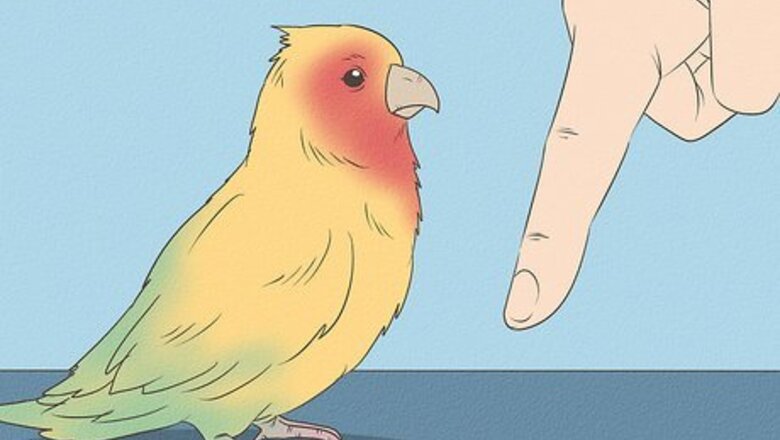
views
X
Research source
In this article, we'll walk you through the complete training process, including how often to train your bird and what training treats work best. With a little patience and a gentle touch, you can teach your pet bird to happily perch on your finger or hand.
- Move your hand slowly toward your bird and place your finger against its lower chest. Apply gentle pressure with your finger until your bird lifts its leg.
- Position your finger under the lifted foot until your bird steps up onto your finger. When it steps up, praise it and give it a special treat.
- Train your bird 2-3 times a day and limit training sessions to 10-15 minutes so your bird doesn't get overwhelmed.
Preparing for Training
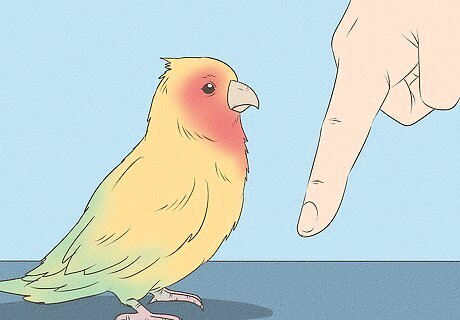
Train your bird 2-3 times a day for 10-15 minutes. Birds are creatures of habit, and have a short attention span, so short, consistent training sessions are the best approach.

Find a comfortable training area. Birds have short attention spans, so it is important to create a space with few distractions. Confident or acclimatized birds may not require a cage for training. If the bird is nervous or unaccustomed to your home, keeping the bird in the cage as you train it may be necessary.
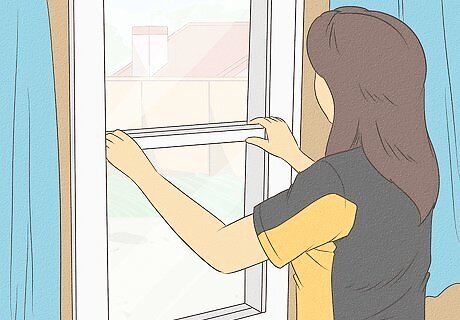
Create a safe and comfortable environment. Close all doors and windows, turn off ceiling fans and other devices that may harm the bird, and keep other animals out of the room. Make sure that you are calm and gentle when training your bird; if you are frustrated, angry or nervous the bird will likely become agitated.

Prepare a special treat as a reward for your bird. As you calm the bird, accustom it to your hand, and teach it the step-up command, it is important to reward the bird’s accomplishments. Rewards (such as fruit and nuts) should be reserved specifically for teaching your bird to step-up and be a food the bird does not usually eat. Smaller, quickly edible rewards can be given to your bird to calm and encourage it as you teach the command. Saying soothing words and being generous in praise will calm and encourage your bird.
Training Your Bird

Familiarize the bird with your hand. Slowly place your hand in the cage (but not too close), until the bird is comfortable. Shy or nervous birds may require several sessions before they are comfortable with your hand. Be persistent, and always make sure to move slowly to avoid startling the bird. Stand just above the bird’s eye level in order to establish dominance. Standing too tall can frighten the bird, and crouching too low may display submission on your part.
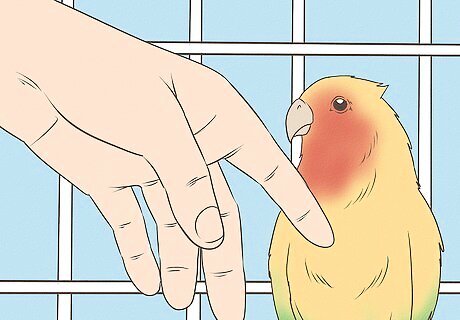
Offer your hand to the bird. Make sure to move your hand slowly, and to hold your hand steady and with confidence. Birds will become nervous if their handler is nervous, and will become reluctant or scared to step onto your finger if your hand wobbles or you drop the bird during these early sessions.
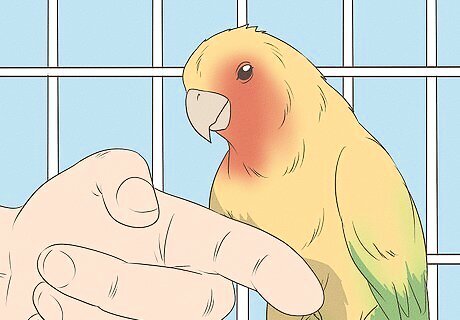
Slowly and gently push your finger against the bird's lower chest, right above his legs. Apply gentle pressure so that the bird is put slightly off balance. The bird should lift a leg when it feels off-balance. When this occurs, place your finger under its foot and lift gently – the bird should step up on to your finger or hand. If the bird is nervous or bites, you may have to begin training with a wood dowel until it becomes more comfortable. A bird may use its beak to steady itself, or even bite your finger or hand. If this occurs do not suddenly pull away or show fear, as the bird may be frightened or read this as a sign of submission. Once the bird steps on your hand gently lift him or her up and say up, when your lower the bird say down.
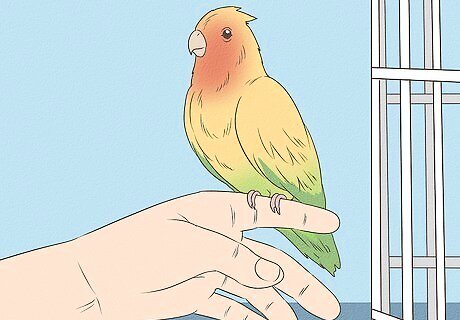
Encourage the bird to “step up.” Use the bird’s name when you say “step up,” and be generous with praise. Many birds, particularly if they are young, will step onto your finger with a little encouragement, as a finger resembles a perch. When your bird steps-up, praise it and give it a special treat you prepared before beginning. Even if the bird only raises one foot to your hand you should praise and reward it. With repetition and encouragement the bird will learn to associate the command "step up" with perching on your hand or arm.
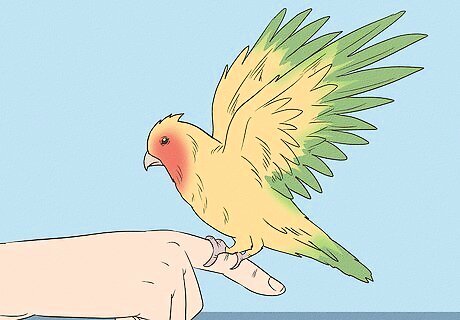
Repeat the training with the other hand. Following the same steps, accustom the bird to your weaker hand. Animals of habit, birds may refuse to perch on your opposite hand unless you take the time to train them during this initial period. As your bird becomes comfortable, you can begin taking it out of the cage before repeating the step-up training.

Stick train your bird. If your bird is shy or nervous and refuses to step on to your finger or hand, use a wooden dowel instead. Once the bird steps up on to the dowel, move on to the "laddering" technique. Place your finger beside and slightly higher than the perched bird and encourage it to move to the new perch. Accompany each step with the "step up" command, and be generous with praise when the bird follows your command. Have the bird continue moving from dowel to finger and finger to dowel until the training session is over.
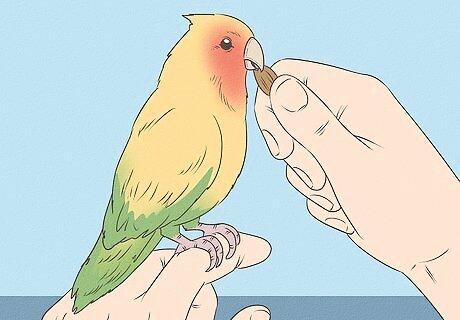
Be persistent, but patient. Birds have unique temperaments and may be shy or nervous, and thus it is important to exercise patience as you train your bird every day. Make a routine of the training sessions. Your bird will learn to anticipate your training sessions together. Reward even small amounts of progress with praise and treats. Encouragement is the best way to make your bird comfortable and teach it to follow your commands.

















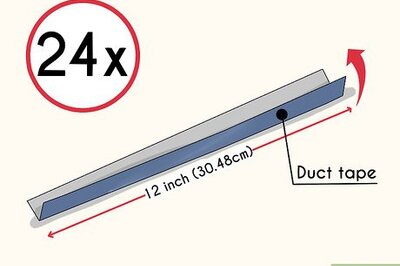


Comments
0 comment